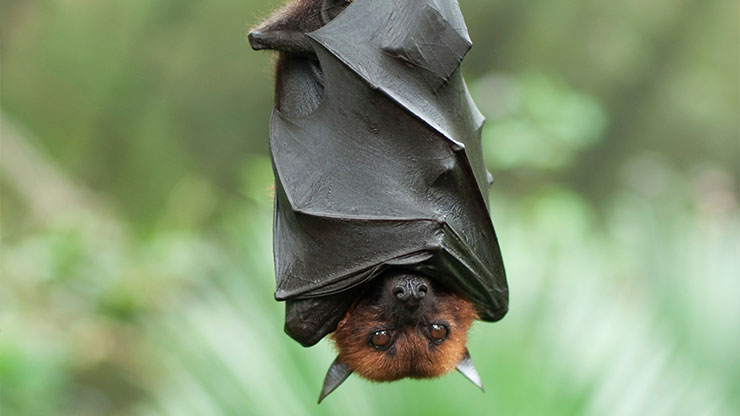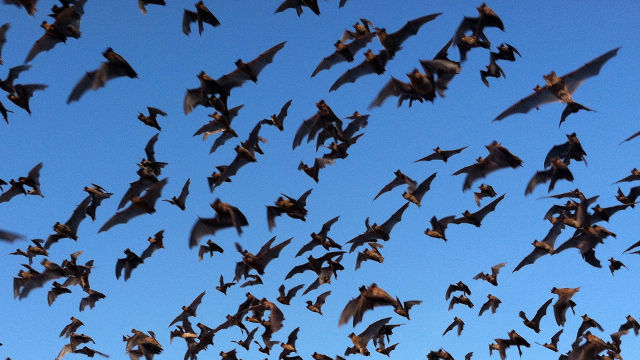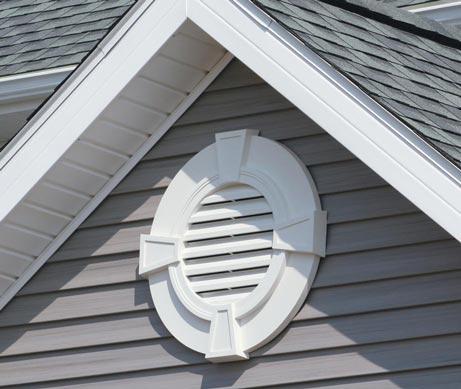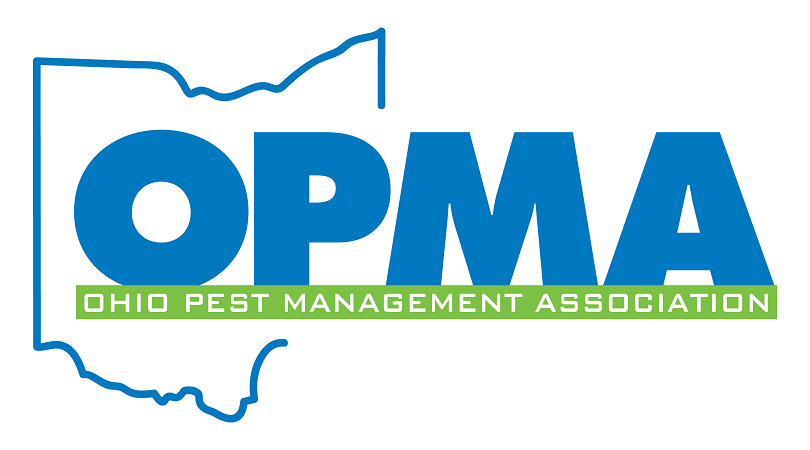In natural surroundings, bats will roost inside hollow trees or caves for shelter. However, man has created ideal roosting areas by building houses and barns. Cracks and openings into attics, soffits and wall voids all provide safe, secure shelter and a place to raise their young.
Bats roost by day and fly at night to feed on insects. On a clear summer evening, most bats will come out at dusk. The best way to determine the number of bats in a house is to station one person on each side of the house just before dusk. Then carefully watch the eaves, chimney, vents, etc., near the roof of the house. On a stormy or overcast night, they may remain inside. When feeding at night, bats often have a favorite resting place. This may be under a porch, carport, overhang, or any area which provides shelter. Droppings found in these areas do not always mean they are getting inside.


ControlingBats
Bat control begins with a thorough inspection to determine if the building can be bat proofed. If a structure can be sealed from the outside to prevent bat entry, this is always the best course of action. Before beginning any exclusion work, determine if an exclusion cone or one-way door should be installed upon completion of the sealing. These devices allow bats to exit, but not re-enter the structure and are a good idea if they can be properly installed and if a significant population of bats is evident. Exclusion cones don’t make sense if a structure can not be completely sealed. Bat proofing normally involves tin flashing, hardware cloth, copper mesh, spray foam insulation and caulking. Bats do not chew through materials like rodents can. If a few bats are trapped inside, they normally do not create a problem. Bat proofing, when practical, is always the best approach since the bat droppings and urine odor left behind will attract new bats for a long time. Additional sealing may be needed in the future due to roof replacement, wind damage, structural deterioration, etc.
If a structure cannot be sealed tightly, several options are available:
- Install excessive, temporary lighting and brightly illuminate the attic or barn.
- Hang a mist net in the attic to catch and remove flying bats.
Upon removing a large population of bats from an attic or wall void, it is wise to treat that area with an insecticide for bat bugs, mites and other parasites associated with bats.
Some bat species will migrate south for the winter, but most species common in this area hibernate through the winter. Bats are not prolific like mice, and normally raise only 2-3 young each year. To compensate for this slow birth rate, bats will commonly live 25 years or more! They are a nuisance when they enter the living quarters of a home or make screeching noises in the walls or attic. In February or March, during a spell of warm weather, bats will commonly enter the living area of the house. Bats born in the spring will also commonly enter in the living area of a house during August or September when they begin to fly on their own. They get lost, disoriented and explore until they become familiar with their surroundings.
Bat droppings and urine can create a real odor problem as bat populations increase. Probably the greatest concern with bats is the fact that some may carry rabies. A bat which is seriously infected with rabies can be too weak to fly. Therefore, do not touch any live or apparently dead bat which is lying on the ground or on the floor inside. Bats which are suspected to be rabid, may be placed in a jar and taken to the local Health Department for testing. Histoplasmosis in accumulated droppings is also a health concern.





